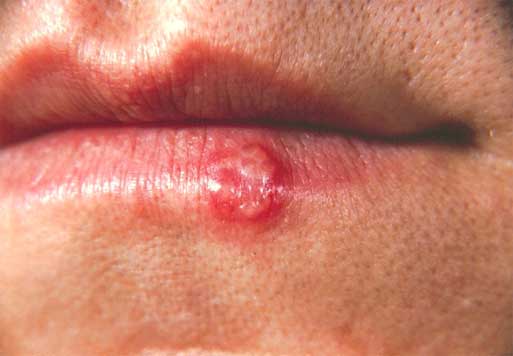"¿Cómo tanto? Si total al día siguiente me lavo la cara en la ducha y listo", pensarán algunas. Pero lo cierto es que no tener una rutina de limpieza antes de dormir en realidad sí puede llegar a ser muy malo, tal como lo demostró Anna Pursglove, una periodista que escribe artículos de belleza para el periódico británico "Daily Mail".
Durante un mes completo, Anna se maquilló como normalmente lo hace, pero no se limpió el rostro ni un solo día. Las reglas del experimento le permitían lavar superficialmente su cara en la ducha todas las mañanas, pero le prohibían utilizar cualquiera de los productos que usualmente se aplicaba en su rutina de limpieza. Asimismo, cada día debía usar nuevo maquillaje sobre los restos del antiguo.
Y para que los resultados de la prueba fueran realmente objetivos, la periodista acudió a un especialista que analizó su rostro con una cámara especial 3D que mostraba todos los detalles. Asimismo, le midió la hidratación de sus mejillas y frente.
"Y entonces le experimento comenzó (…) La primera noche, y luego de un día caluroso y pegajoso (…), estaba desesperada por limpiarme e hidratarme", contó Anna. Pero no lo hizo y se fue a dormir con todo el maquillaje puesto.
"A la mañana siguiente, mi almohada parecía haber sufrido más que mi piel. Aparte de que mis ojos me picaban y que el rímel colgaba de mis pestañas, estaba relativamente indemne", describió.
Como decían las reglas, se lavó en la ducha, se aplicó crema hidratante y luego otra capa de maquillaje.
Temibles resultados
Pero no sólo su zona ocular sufrió las secuelas de renunciar durante un mes a su rutina de limpieza diaria. La periodista contó que sus labios, por ejemplo, se volvieron secos y que las comisuras de su boca se le agrietaron dolorosamente.
"Temía que le hubiera hecho un daño permanente a mi piel", reconoció. "Visiblemente había obstruido y agrandado los poros de mi nariz, tenía la piel seca en labios y mejillas, y los párpados rojos. Los quistes blancos ahora tenían el desagradable aspecto de caspa en mis pestañas", explicó.
De esta manera, Anna volvió a ponerse bajo el imparcial lente de la cámara 3D, obteniendo los siguientes resultados:
- La textura de su piel empeoró en alrededor de un 10%, lo que -según le señaló una dermatóloga- probablemente se debió a que dejó de hidratarla dos veces al día, como usualmente lo hacía. Y no sólo por eso, sino que también porque las capas de maquillaje fueron frenando su natural proceso de renovación.
- Sus arrugas se hicieron más profundas, ya que su piel se volvió menos elástica debido a la resequedad que le causó la falta de hidratación y las partículas de contaminación que fueron quedándose adheridas a su maquillaje.
- Su rostro adoptó un tono rojizo, lo cual demostró que durante el mes en que no lo limpió, diversos agentes irritantes quedaron atrapados al interior de los poros que fueron obstruidos por el maquillaje.
- Los poros se agrandaron alrededor de un 5%, debido a que fueron cerrados por la suciedad.
Y aunque todas estas secuelas pueden parecer horrorosas, una fue la peor de todas: según los expertos, su piel envejeció alrededor de una década.
"Esto probó lo que mi espejo reflejaba: en un mes, mi rostro había envejecido 10 años y todo porque no me quité el maquillaje", señaló Anna, quien temía que el daño fuera permanente. Sin embargo, volvió a respirar cuando una experta le explicó que dejar de limpiarse por cuatro semanas no implicaba un daño significativo, pero que si lo continuaba haciendo en el largo plazo, su piel resultaría muy perjudicada.
Pero no sólo su zona ocular sufrió las secuelas de renunciar durante un mes a su rutina de limpieza diaria. La periodista contó que sus labios, por ejemplo, se volvieron secos y que las comisuras de su boca se le agrietaron dolorosamente.
"Temía que le hubiera hecho un daño permanente a mi piel", reconoció. "Visiblemente había obstruido y agrandado los poros de mi nariz, tenía la piel seca en labios y mejillas, y los párpados rojos. Los quistes blancos ahora tenían el desagradable aspecto de caspa en mis pestañas", explicó.
De esta manera, Anna volvió a ponerse bajo el imparcial lente de la cámara 3D, obteniendo los siguientes resultados:
- La textura de su piel empeoró en alrededor de un 10%, lo que -según le señaló una dermatóloga- probablemente se debió a que dejó de hidratarla dos veces al día, como usualmente lo hacía. Y no sólo por eso, sino que también porque las capas de maquillaje fueron frenando su natural proceso de renovación.
- Sus arrugas se hicieron más profundas, ya que su piel se volvió menos elástica debido a la resequedad que le causó la falta de hidratación y las partículas de contaminación que fueron quedándose adheridas a su maquillaje.
- Su rostro adoptó un tono rojizo, lo cual demostró que durante el mes en que no lo limpió, diversos agentes irritantes quedaron atrapados al interior de los poros que fueron obstruidos por el maquillaje.
- Los poros se agrandaron alrededor de un 5%, debido a que fueron cerrados por la suciedad.
Y aunque todas estas secuelas pueden parecer horrorosas, una fue la peor de todas: según los expertos, su piel envejeció alrededor de una década.
"Esto probó lo que mi espejo reflejaba: en un mes, mi rostro había envejecido 10 años y todo porque no me quité el maquillaje", señaló Anna, quien temía que el daño fuera permanente. Sin embargo, volvió a respirar cuando una experta le explicó que dejar de limpiarse por cuatro semanas no implicaba un daño significativo, pero que si lo continuaba haciendo en el largo plazo, su piel resultaría muy perjudicada.







